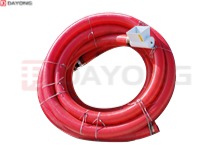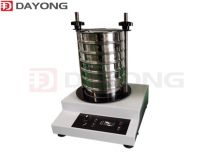What should I do if the linear vibrating screen moves slowly?
Reason 1: The screen surface is not tensioned or damaged
The tension of the screen determines the material feeding speed. During the use of a linear vibrating screen, the screen surface may become loose or damaged due to long-term impact from materials and incorrect feeding methods, which is the main cause of slow or non feeding of the linear vibrating screen.
Solution: Regularly check the tension and damage of the screen surface. If any damage is found, the screen should be replaced in a timely manner. When installing the screen, two people should work together, one person should tension the screen and the other person should tighten it. When feeding the linear vibrating screen, it is necessary to adopt a scientific and reasonable feeding method, which can effectively prolong the service life of the screen surface.
Reason 2: Insufficient excitation force of the vibration motor
During the long-term use of linear vibrating screens, there may be a decrease in motor vibration force, and if production requires an increase in production or a change in material type, it can also lead to a decrease in motor vibration force, leading to the problem of slow material delivery.
Solution: Maintaining the excitation force of the motor requires daily maintenance. If the excitation force is weakened due to changes in material types or increased production, it can be adjusted by increasing the number of eccentric blocks in the motor. In order to achieve better screening effect, you need to adjust according to the actual situation and do not operate blindly, which may backfire.
Reason 3: Damaged damping system
The spring is the main damping system of the linear vibrating screen. If the stiffness of the damping spring is too large, it is easy to generate a large excitation force, leading to damage to the supporting spring and uneven force on the material, resulting in slow material movement.
Solution: It is recommended to choose a support spring with a certain degree of toughness to avoid spring damage due to excessive rigidity.
In summary, the reasons for the slow feeding of the linear vibrating screen go far beyond these. Over time, damage to any component or unreasonable links may lead to the problem of no feeding or slow feeding of the linear vibrating screen. Therefore, it is necessary to pay attention to maintenance and upkeep of the equipment in daily use, and do not overload the equipment.





 (Live chat)
(Live chat)



_213x160.jpg)

 +86-373-3669005
+86-373-3669005 sale@dyvibratingscreen.com
sale@dyvibratingscreen.com +86-373-3669006
+86-373-3669006 From West Room 5, 1st Floor, Building 18, Huilong Yangguang Mingyuan, New District, Xinxiang, Henan, China (Mainland).
From West Room 5, 1st Floor, Building 18, Huilong Yangguang Mingyuan, New District, Xinxiang, Henan, China (Mainland). Your Position:
Your Position:


